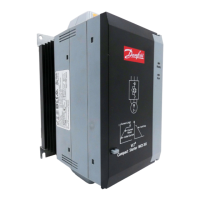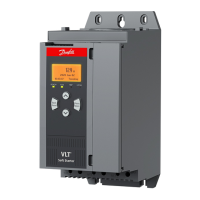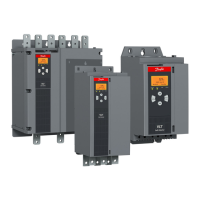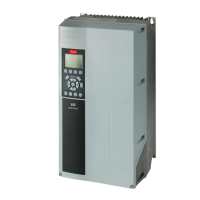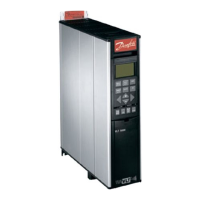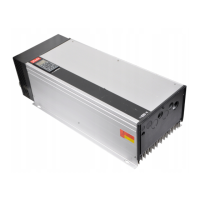MCD 200 Design Guide
22 MG.17.C3.02 – VLT is a registered Danfoss trademark
Soft Start Application Guide
3. Poor performance for heavy duty or extended
starts because heat build-up in the resistors
changes the resistance value.
4. Cannot provide an effective reduced voltage start
for loads with varying start requirements.
Soft starters are the most advanced of the reduced
voltage starters. They offer superior control over
current and torque as well as incorporating advanced
motor protection and interface features.
The main starting advantages soft starters offer are:
1. Simple and flexible control over starting current
and torque.
2. Smooth control of voltage and current free from
steps or transitions.
3. Capable of frequent starting.
4. Capable of handling changing start conditions.
5. Soft stop control to extend motor deceleration
times.
6. Braking control to reduce motor deceleration
times.
■
Types of Soft Start Control
The term 'soft start' is applied to a range of
technologies. These technologies all relate to motor
starting but there are significant differences in the
methods used and the benefits available.
Some of the key differences are described below.
Control philosophy: Soft starters can generally be
divided into two groups.
• Timed Voltage Ramp (TVR) systems
• Current controlled systems
TVR starters control voltage applied to the motor in a
preset manner and receive no feedback on motor
starting current. Control of start performance is
provided to the users through settings such as Initial
Voltage and Ramp up time. Soft Stop is also
commonly available and provides the ability to extend
motor stopping times.
Current controlled soft starters monitor motor current
and use this feedback to adjust voltage so that user
specified starting current is maintained. Soft Stop is
also provided as are range of motor protection
functions.
Power assemblies: Soft starters can provide control of
one, two or all three phases.
Single-phase controllers remove the torque shock
associated with motor starting but provide no
significant current reduction. They must be used with a
line contactor and motor overload. They are suitable
for very small motors and should only be applied to
light applications with low to medium start frequency.
Two-phase controllers control two phases while the
third phase is uncontrolled. These controllers provide
soft start and current reduction. Care should be taken
to ensure that the control algorithms of two-phase
controllers balance the output waveform in order to
provide a symmetrical waveform. Basic two-phase
controllers subject the motor to an asymmetrical
output waveform which creates a DC field in the
motor. This stationary DC field increases the required
start current and increases motor heating. Such
unbalanced controllers should not be applied to high
inertia loads or in situations with high start frequencies.
Three-phase controllers control all phases and are
best suited for very large motors.
External or internal bypass connection: The SCRs in a
soft starter can be bypassed once the motor is up to
speed. This reduces heat generation and prevents
damage to the SCR from overcurrent or overvoltage
events that occur while the motor is running. Some
soft starters include built-in bypass contactors while
other provide terminals for connection of an external
bypass contactor.
■
Understanding Soft Starter Ratings
The maximum rating of a soft starter is calculated so
the junction temperature of the power modules (SCRs)
does not exceed 125
o
C. Five operating parameters
affect the SCR junction temperature: Motor Current,
Start Current, Start Duration, Number of Starts Per
Hour, Off Time. The full rating of a particular soft start
model must account for all these parameters. A
current rating on its own is not sufficient to describe
the capability of a soft starter.
IEC 60947-4-2 details the AC53 utilisation categories
for describing a soft starter's ratings. There are two
AC53 codes:
1. AC53a: for soft starters used without bypass
contactors.
For example, the following AC53a code describes
a soft starter capable of supplying a 256 A run
current and a start current of 4.5 x FLC for 30
seconds 10 times per hour where the motor runs
for 70% of each operating cycle (operating cycle =
60 minutes / starts per hour).
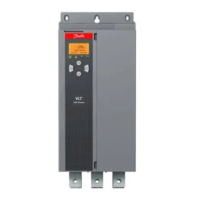
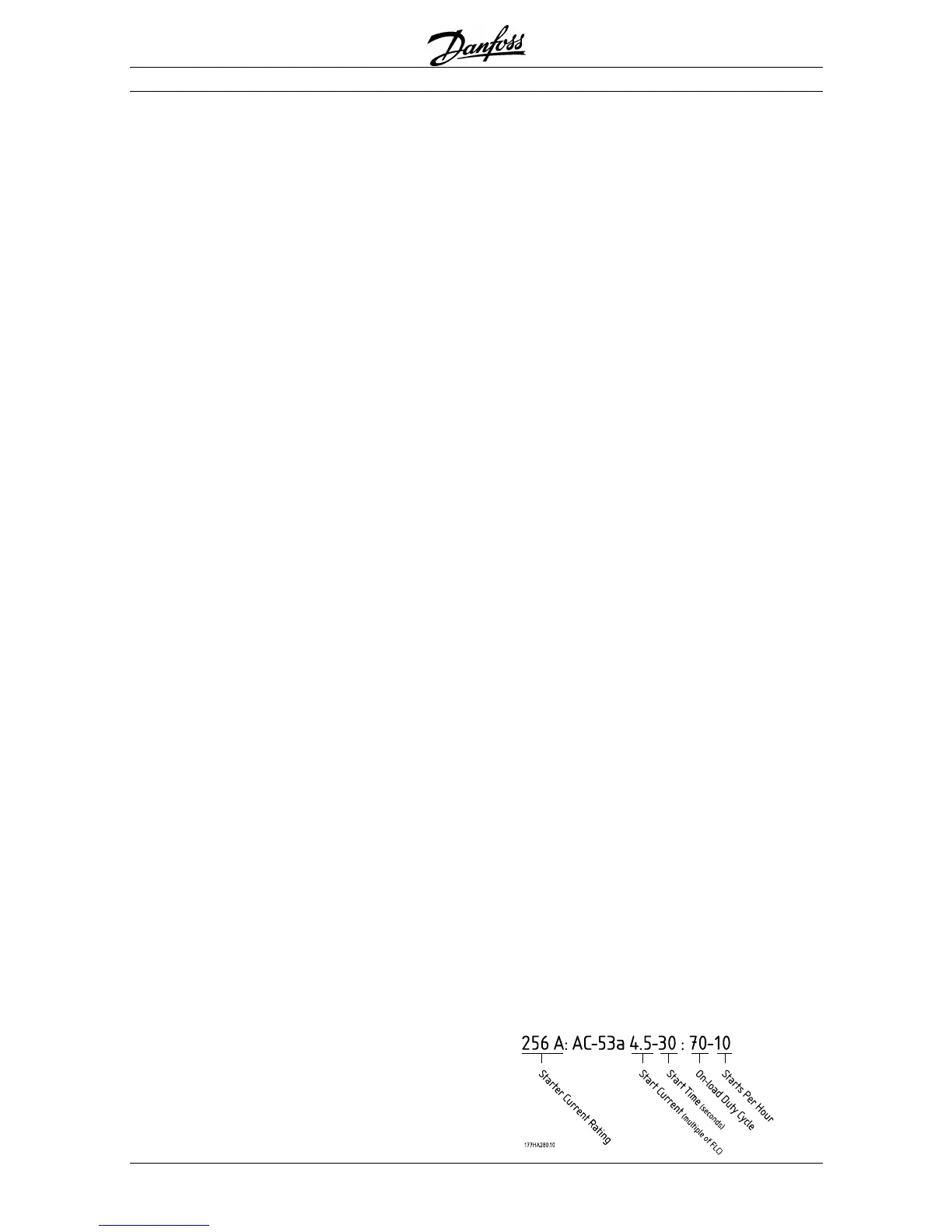